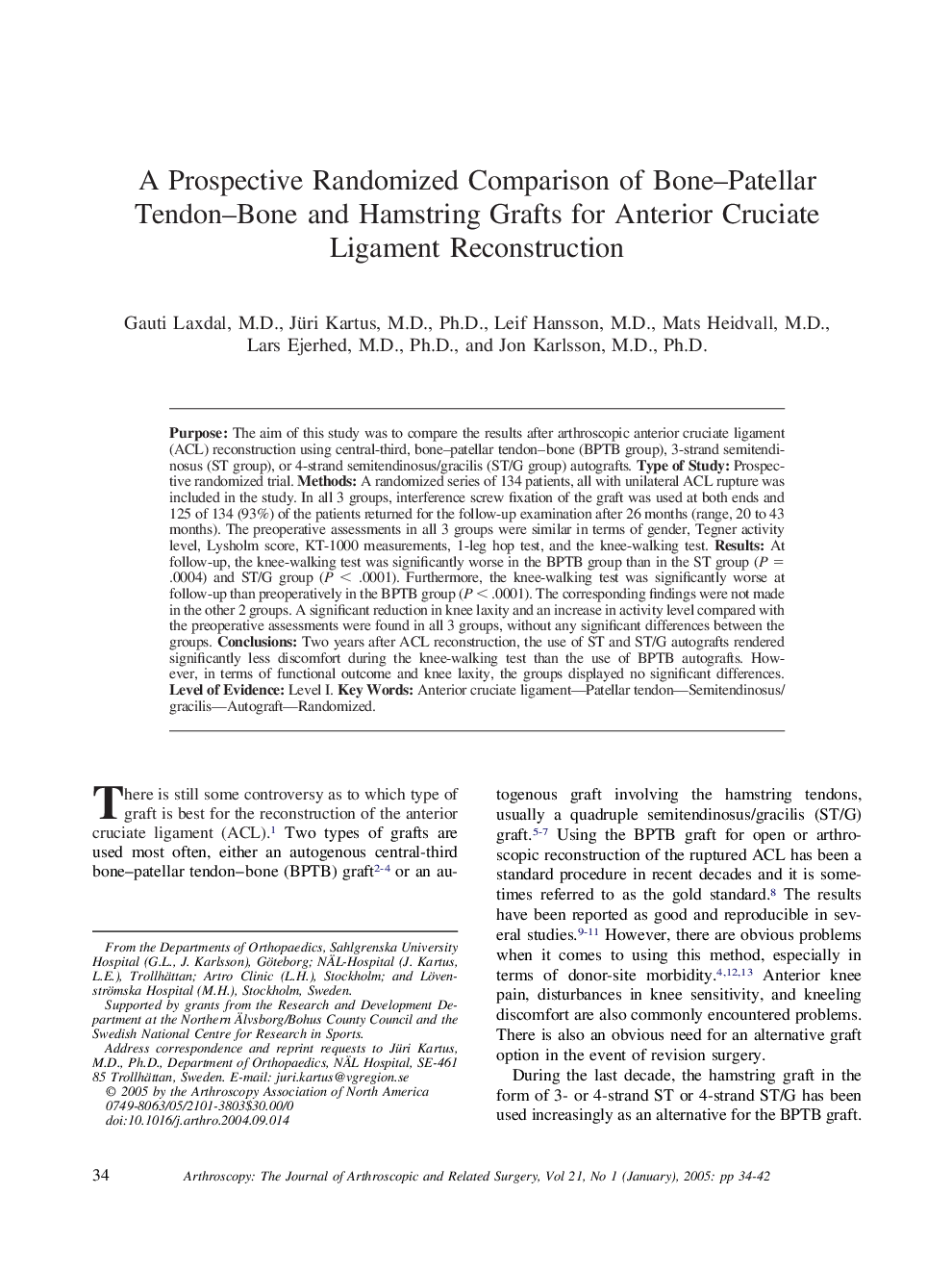| Article ID | Journal | Published Year | Pages | File Type |
|---|---|---|---|---|
| 10079273 | Arthroscopy: The Journal of Arthroscopic & Related Surgery | 2005 | 9 Pages |
Abstract
Purpose: The aim of this study was to compare the results after arthroscopic anterior cruciate ligament (ACL) reconstruction using central-third, bone-patellar tendon-bone (BPTB group), 3-strand semitendinosus (ST group), or 4-strand semitendinosus/gracilis (ST/G group) autografts. Type of study: Prospective randomized trial. Methods: A randomized series of 134 patients, all with unilateral ACL rupture was included in the study. In all 3 groups, interference screw fixation of the graft was used at both ends and 125 of 134 (93%) of the patients returned for the follow-up examination after 26 months (range, 20 to 43 months). The preoperative assessments in all 3 groups were similar in terms of gender, Tegner activity level, Lysholm score, KT-1000 measurements, 1-leg hop test, and the knee-walking test. Results: At follow-up, the knee-walking test was significantly worse in the BPTB group than in the ST group (P = .0004) and ST/G group (P < .0001). Furthermore, the knee-walking test was significantly worse at follow-up than preoperatively in the BPTB group (P < .0001). The corresponding findings were not made in the other 2 groups. A significant reduction in knee laxity and an increase in activity level compared with the preoperative assessments were found in all 3 groups, without any significant differences between the groups. Conclusions: Two years after ACL reconstruction, the use of ST and ST/G autografts rendered significantly less discomfort during the knee-walking test than the use of BPTB autografts. However, in terms of functional outcome and knee laxity, the groups displayed no significant differences. Level of evidence: Level I.
Related Topics
Health Sciences
Medicine and Dentistry
Orthopedics, Sports Medicine and Rehabilitation
Authors
Gauti M.D., Jüri M.D., Ph.D., Leif M.D., Mats M.D., Lars M.D., Ph.D., Jon M.D., Ph.D.,
